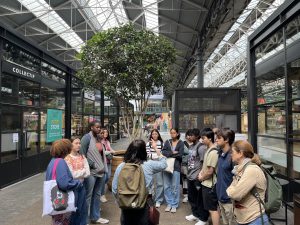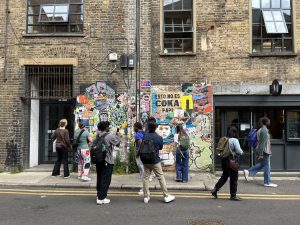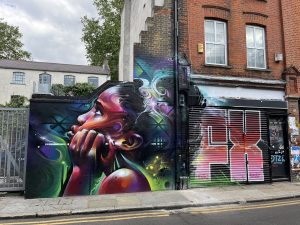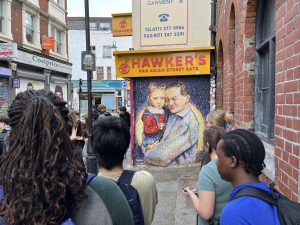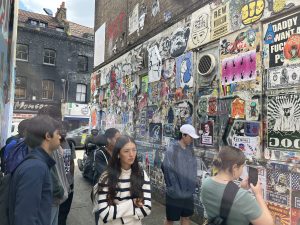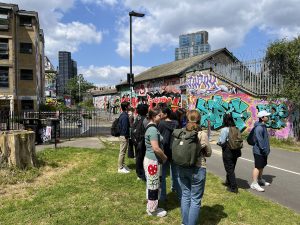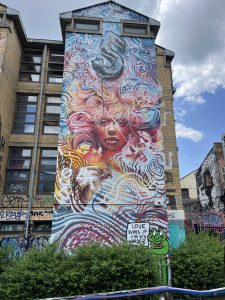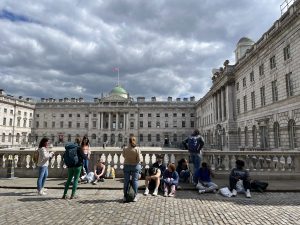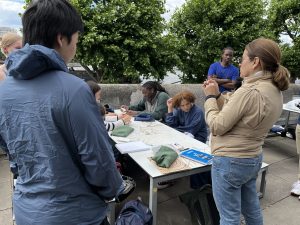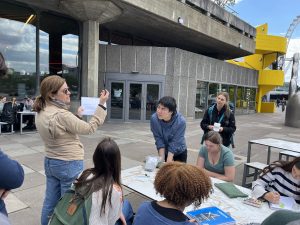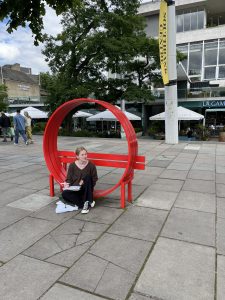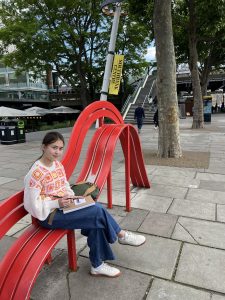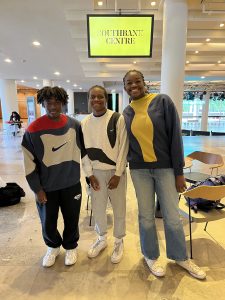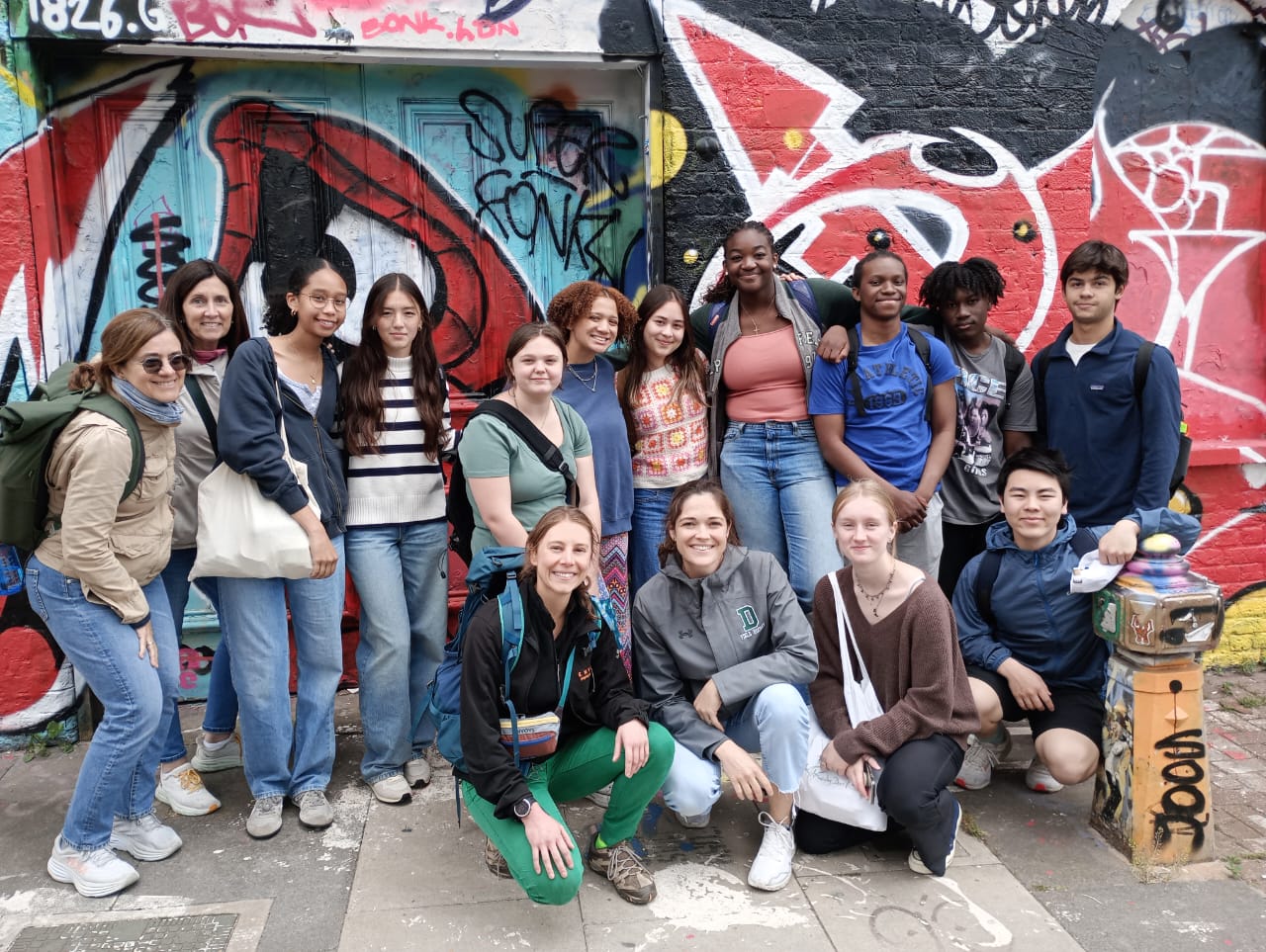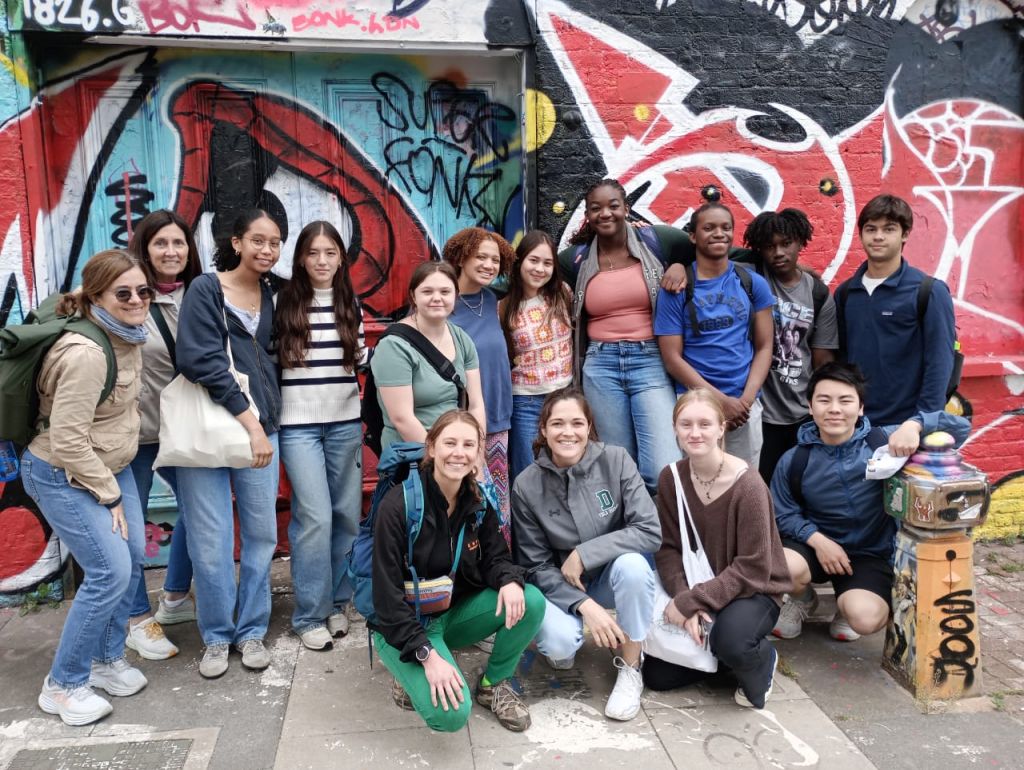Amadeo ’25 and Ryan ’26, recount a day visiting Brick Lane, Shoreditch, and the Spitalfields Market.
After having a traditional English breakfast in the hotel, we headed on a double decker bus past London’s financial district and a few blocks away of the city boundary. We then met with the tour guide who would show us around Brick Lane and Shoreditch, an area filled with both exposed and hidden street art work, ranging from graffiti designs, to sculptures sitting atop traffic signs. Shoreditch is right outside the London city boundary, where many city regulations do not apply. This is quite apparent, as as soon as one crosses the limit there is a sudden explosion in street art.
We learnt that this zone used to be poor in Victorian times and beyond, and that many of the buildings became abandoned in the mid 20th century due to a lack of financial prosperity and opportunity. It was towards the end of the century that many optimistic artists moved in. The increasingly artistic zone attracted a wave of migrants, including counterculture “hipsters” that helped spark economic growth through the inauguration of new businesses and through social media promotions. The provoked gentrification in the zone attracted banks and larger corporations, helping increase the value of the area. To this day, the opportunities brought by the economic prosperity combined with the vibrant artistic population have shaped Shoreditch into an internationally recognized and admired community.
The two hour-and-a-half tour took us around the corners of the area, each filled with creative, perplexing, and often political works of art. We learnt that because street art is vulnerable to the environment and people, the lifespan of a piece can be as short as a few minutes, but can also be decades-long. Also, the artistic dialogues between artists and others was very apparent, especially with posters and graffiti art often covering older works of art. The tour definitely gave us all a good sense of how diverse and influential street art really is.
-Amadeo ’25
After the appealing visuals came the appealing taste. We circled back to the Spitalfields Market, where we started the street art tour. This must be a symbolic metaphor for the cyclic history of art either by beautiful design or by happy accident. The market expressed the same culture melting and mixing like the street art. I had an authentic ‘merican double CRIME beef burger that reads “fries” instead of “chips” in London. Unbelievable. Besides Chinese food and Middle Eastern food, the market also sells clothes and jewelry in distinctive styles of very unique cultures. All these are the impressive result of the influx of new people and ideas that transformed this place once of penury to this flourishing fantasy.
So much artistic content has accumulated from the street art experience in the morning, and therefore we returned to the River Thames and did another round of sketching. Besides practicing with perspective drawings with the buildings and bridges, we were also assiduous to the form of people. Drawing people in secret made me feel a little diffident and guilty, so in the final twenty minutes, I posed expressively for my peers and embraced their eyesight. I sacrificed myself so that they could stare and draw with confidence and innocence. It was funny.
To me, The point of drawing humans is beyond depicting the movement and structure of the physical body, but the focus on the perspectives and choices of others. It was in those moments that I strongly realized their self autonomy and individuality. I would imagine the reason they were wearing what they were wearing, the reason they were holding that flower, and the reason they were making an anxious face. Drawing starts with noticing, and I wondered who they were.
A wise person once said, “All artists need to eat.” That’s exactly why we finished off the day with a steaming bowl of ramen and snacks from Tesco. It’s true that our humanly conditions were a very important artistic inspiration.
-Ryan ’26
